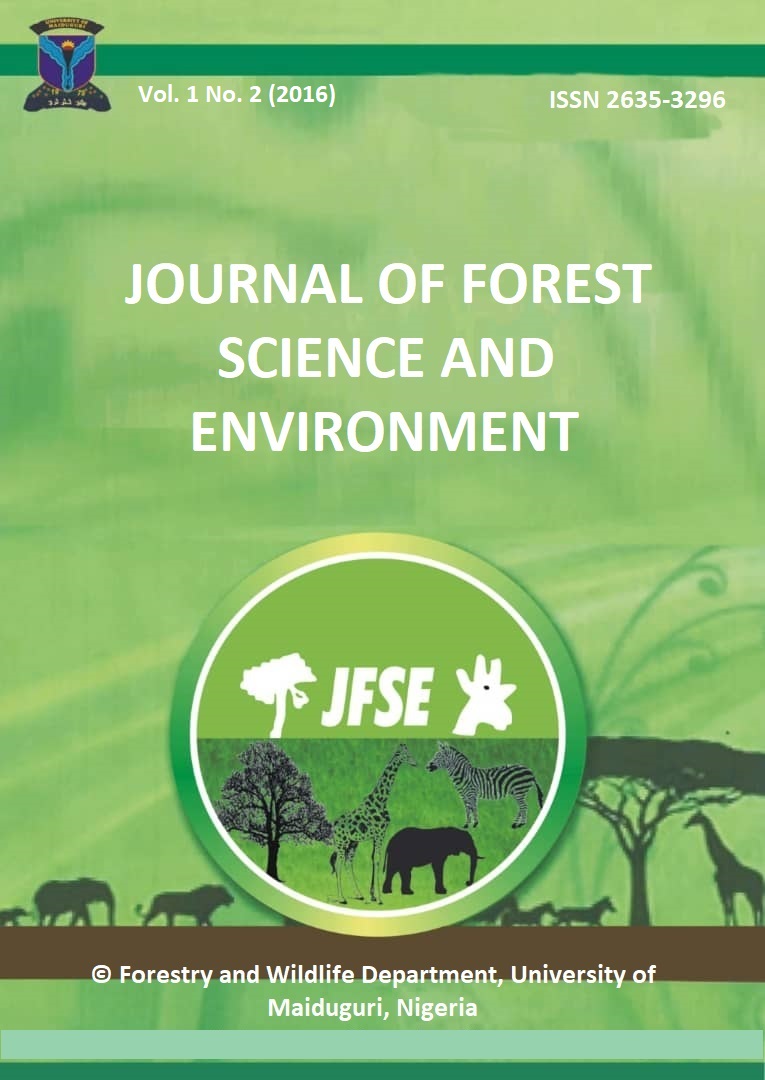Abstract
The land-use pattern of a region is an outcome of its natural and socio-economic factors and their utilization by man in time and space. Land-use has become a central component in current strategies of managing natural resources and monitoring environmental changes. Urban expansion has increased the exploitation of natural resources and has changed land use and landscape patterns. Rapid urbanization, therefore, brings opportunities for new urban developments, however, it also has brought serious losses of arable land, forest land and water bodies. Plant diversity change is a major concern of global environmental changes. Remote sensing and Geographic Information system (GIS) provide fundamental tools used in the investigation of synoptic view and multi temporal Land use patterns of Kano state. The study was conducted to determine the impact of land use on plant diversity in the ecological zones of Kano state. Transects were laid in each of the sampling points to enumerate plant species, all from a quadrant size of 100 x 100m (10,000sqm). A total number of plant species enumerated for Sahel savanna were 46 species, 78 species for Sudan savanna and 94 species for the Northern Guinea savanna respectively. Land use of the state was determined through satellite imagery in a staggered form of ten years interval of 1973, 1983 1993, 2003 and 2013, respectively. The data obtained in percentages and square kilometers was analyzed using descriptive statistics, where the built up areas as at 1973 was found to be 1.32% out of the total land mass of the study area to a value increase of 5.6% in the year 2013, a clear significant difference of 4.28%. Identified increase in land use for infrastructural development has given rise to land and vegetation loss where Agriculture, Water body and Game reserves were affected by the anthropogenic activity of man in favor of built up areas.
References
Ahmed K (2006). The Physical Environment of Kano State. www.kanostate.net//physicalenvironment.html.
Jensen, J.R. (1996). “Introductory digital processing”: A remote sensing perspective (2nd edition). Upper Saddle River, NJ: Prentice-Hall.
Lambin EF, Rounsevell MDA and Geist HJ (2000). Are agricultural land-use Models able to predict changes in land use intensity? Agriculture, Ecosystems and Environment, Vol. 82 (2000): 321– 331.
Lambin EF, Turner BL, Geist H, Agboola S and Angelsen A (2001). The Causes of Land-use and Land cover change: moving beyond the myths. Global Environmental Change, 11(4): 261-69.
Maconachie R (2007). Urban growth and Land Degradation in Developing Cities: Change and Challenges in Kano, Nigeria Ashgate, Aldershot: 194p.
Maiwada AD (2004). In A.I Tanko and Momale (Eds) Kano, Environment, Society and Development. London and Abuja, Adonis &Abbey Publishers. Pp365
Moretimore M, Harris FMA and Turner B (1999). Implications of Land use challenge for the production of plant biomass in densely populated Sudano Sahelian shrub grasslands in North–East Nigeria. Global Ecology and Biogeography, 8, pp. 243-256.
Munasinghe M (1992). Biodiversity protection policy, Environmental valuation and distribution issue. Ambio, 21, 227-236.
Murnaghan N (2001). Handbook for the Field Assessment of Land Degradation. Eartscan Publications, London.
Olofin EA (1987). Some aspects of the Physical Geography of the Kano Region and Related Human Responses. Bayero University, Kano press. 50p.
Pullan RA (1974). Farmed parkland in West Africa. Savanna, 3 (2): 119-152.
Qiming Z (1995). The Integration of GIS and Remote Sensing for Land Resource and Environment Management. Proceedings of United Nation ESCAP Workshop on Remote Sensing and GIS for Land and Marine Resources and Environment Management, School of Geography, The University of New South Wales Sydney, NSW 2052, Australia. February 13-17, 1995, pp.43-55.
Tanko and Momale (2014). Kano, Environment, Society and Development. London and Abuja, Adonis and Abbey Publishers, Pp 35-31.
UN Report on Climate change (2007). Retrieved 25 June, from Web archive (1)
Yusuf MA (2001). Soil assessment and indigenous soil management strategies in semi-arid North Eastern Nigeria. Unpublished PhD Thesis, Department of Geography, Bayero University, Kano.

